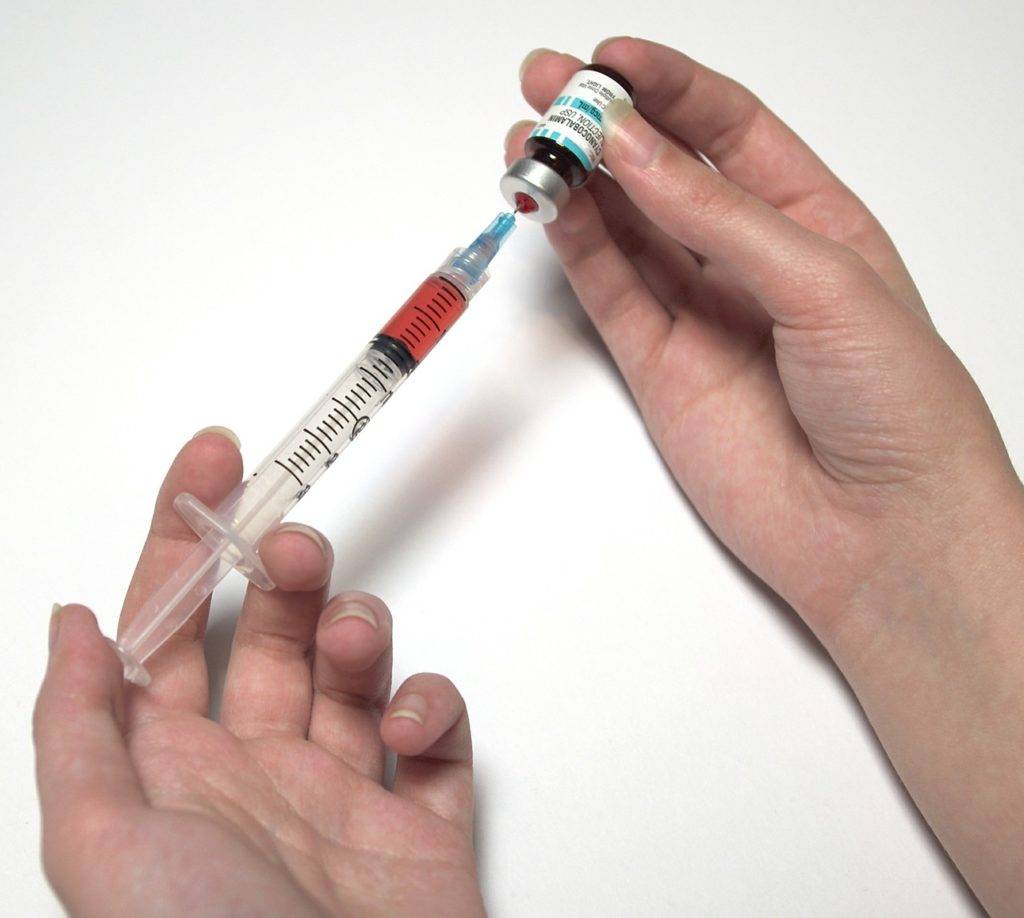Why Tetanus Is No Joke—and How Tdap Protects You
Imagine this: you’re outside gardening, having a peaceful day, when you get a small cut on your hand. Or maybe your child scrapes their knee playing outside. It doesn’t seem like a big deal—until you realize that even a tiny wound can let in something incredibly dangerous: tetanus.

Tetanus is a silent and deadly infection caused by bacteria that live in dirt, dust, and even on rusty nails. It can sneak into your body through a scratch, cut, or puncture wound. And once it gets in, it can cause severe muscle spasms, lockjaw, breathing trouble, and even death if not treated in time.
But here’s the good news—you can stop tetanus before it starts. The Tdap vaccine is a powerful protector. It doesn’t just guard against tetanus—it also shields you from diphtheria (a dangerous throat infection) and pertussis, also known as whooping cough, which can be deadly for babies and young kids.
In this helpful guide, we’ll walk you through
- What tetanus is and why it’s so serious
- How the Tdap vaccine works to protect you
- Who should get the Tdap shot—and when
- Why staying up to date on boosters keeps you safe for life
Let’s break it all down in a way that’s easy to understand and even easier to act on—so you and your family can stay healthy and protected.
What Is Tetanus? A Dangerous and Painful Threat
Tetanus: The Silent Danger Lurking in Everyday Injuries
Tetanus is a serious and life-threatening disease caused by a germ called Clostridium tetani. This germ lives in soil, dust, and animal waste. It can survive in the environment for a long time, just waiting for a chance to sneak into your body.
But here’s the scary part—Clostridium tetani doesn’t make you sick right away. Instead, it produces a powerful poison called a toxin. Once this toxin enters your body, it attacks your nervous system. That’s the part of your body that controls your muscles and helps you move.
How Tetanus Gets In
Tetanus usually gets into your body through cuts, scrapes, or open wounds. Even something as simple as stepping on a rusty nail, getting scratched by a dirty object, or having a burn or bite can open the door. Here are some common ways the bacteria can enter your body:
- Deep cuts from metal or glass
- Puncture wounds from nails, needles, or splinters
- Animal bites or scratches
- Burns that break the skin
- Surgical wounds or piercings that aren’t kept clean

If the wound is dirty—like it has soil, dust, or poop on it—there’s an even higher chance of tetanus germs getting in.
Symptoms and Severity: Why Tetanus is So Dangerous
Tetanus doesn’t show up right away. Symptoms usually appear between 3-21 days after the bacteria get into your body. Most people start noticing signs around day 8, but the timing can vary depending on the location and severity of the wound.
Once symptoms begin, they can get worse quickly. Here are the most common and serious signs of tetanus:
- Jaw Cramping or “Lockjaw”: This is often the first symptom. Your jaw muscles tighten up so much that it’s hard or even impossible to open your mouth.
- Muscle Stiffness: You feel stiff in your neck, back, or whole body. It can be painful and make it hard to move.
- Severe Muscle Spasms: These are sudden, powerful jerks or tightening in your muscles. They can hurt a lot and may happen often.
- Trouble Swallowing: The muscles in your throat can become so tight that it’s hard to eat or drink.
- Seizures: Some people have seizures, where the body shakes uncontrollably.
- Fever and Sweating: Your body might feel hot, and you may sweat a lot, even if you’re not active.
- High Blood Pressure and Fast Heart Rate: The infection puts your body under serious stress, making your heart beat faster than normal.
The Risk Is Real
Without fast and proper treatment, tetanus can be deadly. Even with hospital care, some people spend weeks in intensive care, relying on machines to breathe or move. And here’s the worst part: recovery can be slow and painful.
Some people who survive tetanus have long-term health problems, including lasting muscle stiffness or trouble with movement. That’s why prevention is so important, and getting the Tdap vaccine is one of the smartest things you can do to protect yourself and your family.
What Is the Tdap Vaccine?
A Triple Threat Against Disease
The Tdap vaccine is a combination vaccine that protects against three serious diseases:
- Tetanus: Prevents muscle stiffness and spasms caused by Clostridium tetani.
- Diphtheria: Guards against a bacterial infection that can lead to breathing problems, heart failure, and paralysis.
- Pertussis (Whooping Cough): Protects against a highly contagious respiratory disease known for severe coughing fits.
Tdap stands for Tetanus, Diphtheria, and acellular Pertussis. The “acellular” component means it contains purified components of the pertussis bacterium, reducing side effects compared to older versions of the vaccine.
How Tdap Protects Against Tetanus: Building a Shield Before Trouble Strikes
1. Building Immunity the Safe and Smart Way
The Tdap vaccine works like a training coach for your immune system. It contains inactivated toxins—also called toxoids—from the tetanus bacteria. These are completely harmless, so they can’t make you sick. But even though these toxins are weakened, your body still learns how to fight them.
When you get the vaccine, your immune system builds special proteins called antibodies. These antibodies are like tiny bodyguards that protect you. Later, if you ever get a cut or scrape that lets real tetanus germs in, your body is already prepared.
The antibodies rush in and neutralize the toxin before it can cause serious harm.
2. It’s All About Prevention
It should be emphasized that the Tdap vaccine is for prevention only. If someone already has tetanus, the vaccine won’t stop the disease. That’s why getting vaccinated before exposure is so critical.
Think of it like wearing a seatbelt. You don’t put the seatbelt on after a crash—you buckle up to stay safe before anything happens. The Tdap vaccine is your immune system’s seatbelt. And just like a seatbelt, you need to make sure it still works over time. That’s why boosters are important.
The bottom line? Don’t wait until it’s too late. Tetanus is dangerous, but with the Tdap vaccine, you’ve got strong protection on your side.
Who Needs the Tdap Vaccine?
Adolescents
The Centers for Disease Control and Prevention (CDC) recommends that adolescents receive a single dose of Tdap, preferably at age 11 or 12. This booster helps maintain immunity as the protection from earlier childhood vaccines wanes over time.
Adults
Adults who have never received the Tdap vaccine should get a dose as soon as possible. After that, a Td (tetanus and diphtheria) or Tdap booster is recommended every 10 years to maintain protection.
Pregnant Women
Pregnant women should receive a Tdap vaccine during each pregnancy, preferably between 27 and 36 weeks of gestation. This timing helps protect the newborn from pertussis in the first few months of life, before they can receive their own vaccinations.
Individuals with Certain Wounds
If you have a wound that’s prone to tetanus infection and it’s been more than 5 years since your last tetanus-containing vaccine, a booster may be recommended. This ensures your body has enough antibodies to fight off potential infection.
The Importance of Regular Boosters
Immunity Wanes Over Time
Protection from the Tdap vaccine decreases over time. That’s why booster shots are essential to maintain immunity throughout your life.
Recommended Booster Schedule
- Adolescents: One Tdap dose at 11 or 12 years old.
- Adults: A Td or Tdap booster every 10 years.
- Pregnant Women: One Tdap dose during each pregnancy.
Staying up to date with your boosters ensures continuous protection against these serious diseases.
Safety and Side Effects
Common Side Effects
The Tdap vaccine is generally safe and well-tolerated. Most side effects are mild and temporary, including
- Pain, redness, or swelling at the injection site
- Mild fever
- Headache
- Fatigue
- Nausea or stomach upset
Rare Side Effects
Serious side effects are rare but can include severe allergic reactions. If you experience signs of an allergic reaction, such as difficulty breathing, swelling of the face and throat, or a fast heartbeat, seek medical attention immediately.
Overall, the benefits of vaccination far outweigh the risks, and the Tdap vaccine has a strong safety record.
Protect Yourself and Your Loved Ones

Tetanus is a severe disease that can lead to painful muscle spasms, breathing difficulties, and even death. Fortunately, the Tdap vaccine provides effective protection against tetanus, diphtheria, and pertussis.
By staying up to date with your vaccinations and boosters, you not only protect yourself but also help safeguard your community, especially those who are most vulnerable.
Take Action Today:
- Check your vaccination records.
- Schedule a Tdap booster if you’re due.
- If you’re pregnant, talk to your doctor about getting the Tdap vaccine.
For more information on immunizations and to ensure your family is protected, visit Omega Pediatrics Tdap for Adults: Protecting Yourself and Those Around You and The Vital Role of Routine Vaccinations for Children’s Health and Herd Immunity
Note: This blog post is for informational purposes only and does not substitute professional medical advice. Always consult with your healthcare provider for personalized recommendations.



